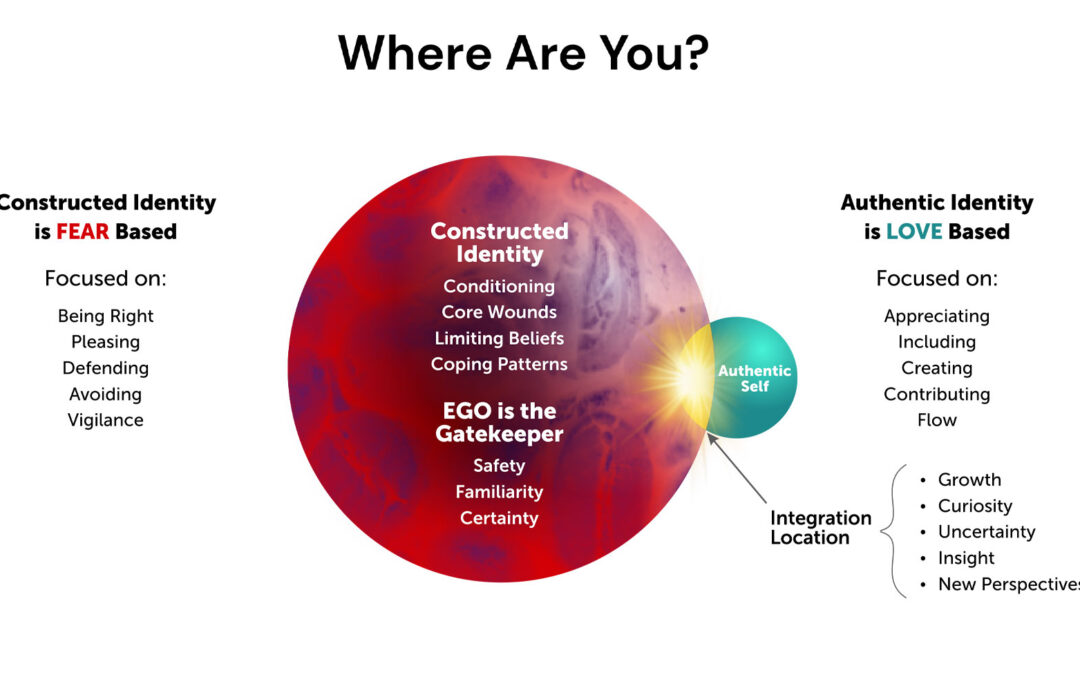
Growth
This blog is based on a conversation with Lynn Sumida and Jeff Brown, founders of Expanding You.
There’s a fun little team building challenge that you may be familiar with; using only scotch tape and dry spaghetti noodles, build the tallest tower possible that can support a single marshmallow at its top. Called the Marshmallow Challenge, this test was used in a study by designer Tom Wujec that compared the performance of different groups in this kind of challenge.
Teams, on average, were able to suspend the marshmallow about 20 inches in the air, but there were a couple surprises. Notably, lawyers and business graduate students performed well below average, while CEOs scored just barely above it. Coming in several steps above the CEOs, however, were kindergarteners.
How is it that decades of education and experience did not allow these professionals to surpass children in this challenge? One common theory is that, while the adults would begin by deliberating on plans and divvying roles between one another, the kids would simply get hands on noodles and go to town.
A kindergartner with an idea doesn’t stop to ask if everyone agrees and thinks it’ll work – they just try and see! If another kid saw that wasn’t working, they had very few reservations about grabbing extra materials and testing an idea of their own. Where adults engage in a political and social dance of identifying leaders, being polite, and trying to appear smart or helpful, children simply play.
The good news is that the creative, playful approach of our childhood is still accessible to us as adults – it’s just obscured by a lifetime of conditioning. This conditioning forms what Exanding You calls the Constructed Identity (familiar to those who have read how our relationship with identity changes) and it has a number of defining characteristics:
The EGO seeks to preserve our Constructed Identity and maintain a sense of safety, familiarity, and certainty. Its purpose is to protect us from perceived threats to our well-being, often at the expense of growth and change.
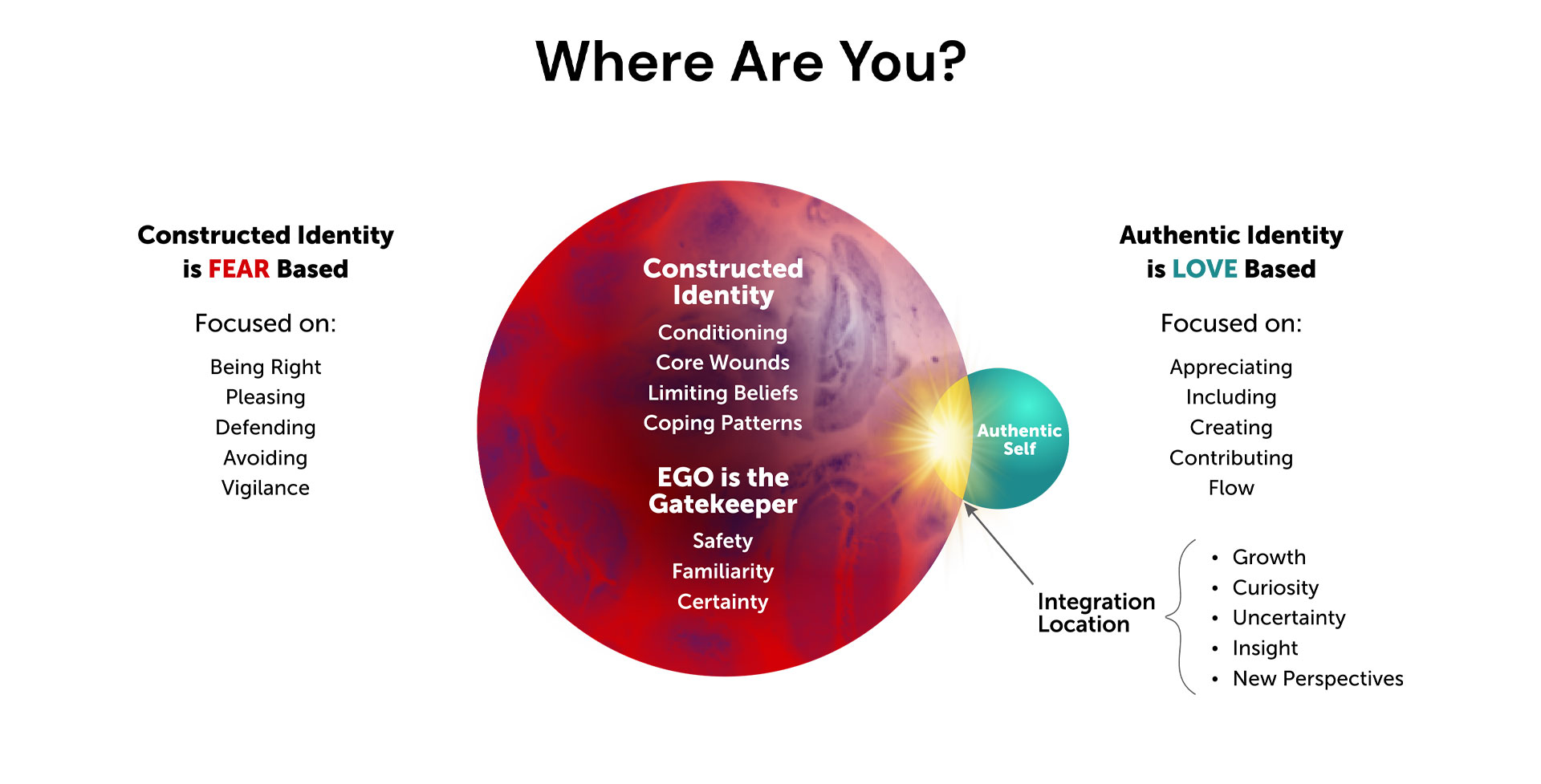
To see how this fits with your own experience, imagine yourself starting the Marshmallow Challenge with a team of strangers – what would you do? Would you offer a suggestion, or wait for someone else to speak first? If people rejected your idea, how would you feel?
If you notice thoughts such as “oh, I don’t want to be rude,” “what do I know,” or “this idea better work,” you might be engaging through a Constructed Identity. These thoughts are guided by fear, such as fear of seeming aggressive, arrogant, or unintelligent. The EGO uses this fear to keep us in familiar, tried-and-true patterns rather than engaging in a way that risks our sense of safety.
The Constructed Identity is formed early on and developed over time. Moments of stress or of praise subtly (or not so subtly) inform our young, growing brains of the behaviors that will help us avoid discomfort and gain recognition. Beliefs are formed and then reinforced by similar experiences throughout our lifetime, creating patterns in our relationships with self, others, money, and more.
Constructed patterns bring varied results – you might have learned to value work ethic, receiving raises and accolades in your professional life. Or you might feel like you keep dating the same person over and over, each time ending the same as the last. As we pay more and more attention to the thoughts and beliefs embedded in these repeated experiences, we give focus to the constructed identity, taking it away from the adventurous, trusting, authentic self that characterized our childhood.
It is this over-attentiveness that makes our beliefs seem “real” and keeps us from challenging them. The Expanding You programs shine a light on these beliefs and how they are operating in your life. Let’s imagine that, at some point in elementary school, you excitedly jumped up from your desk when the lunch bell rang, eager to dine and play with your friends.
This was met with a scolding from your teacher who saw this as disruptive and rude, and immediately your EGO takes note that being overly expressive risks your social safety. You start to become more vigilant in how you display your emotions, seeking to avoid the discomfort of potentially having your feelings responded to negatively.
Time and again you restrain yourself, rarely (if ever) challenging the constructed identity’s idea of how to behave. As you get older, it takes up a larger and larger part of your attention and informs more and more of your behavior.
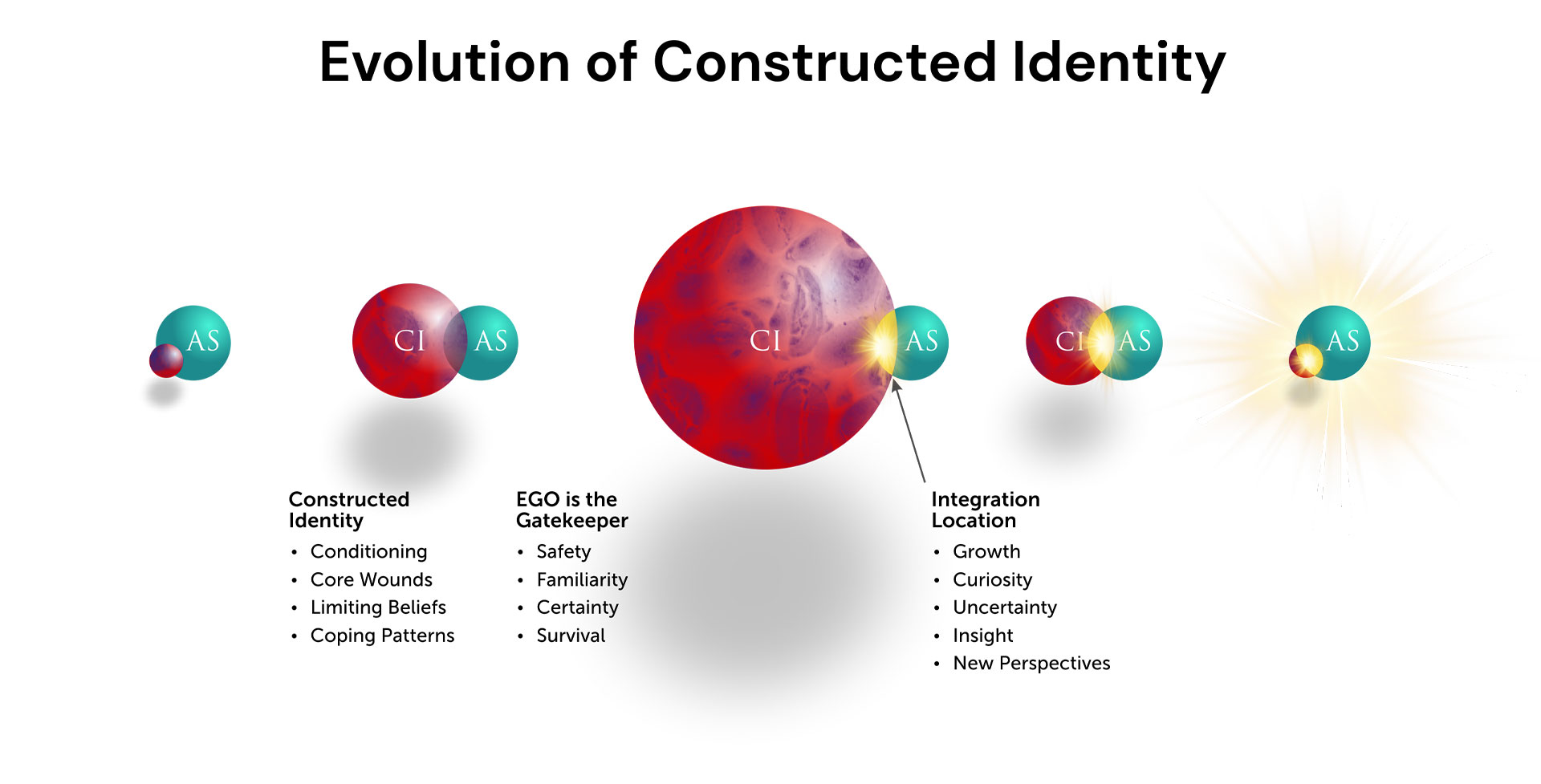
This mindset is depicted at the center of Lynn Sumida and Jeff Brown’s model for how their concept of the Constructed Identity changes over time. Depicted above, the center is where many of us spend the most of our time. In this space we worry about what we “should” be, do, or say. We fret about things that are outside of our control, such as peoples’ reactions to us or events that have already happened or have yet to happen.
The good news is that we can move away from fear and shift our attention back to the loving, Authentic Self. First, recognize that the Constructed Identity doesn’t actually become more true or real as our attention to it grows; like a tiny pimple on a beautiful face, it fights for our attention thinking that, if we obsess over it, we can protect ourselves from embarrassment.
Rather than clinging to an old belief that “pimples are gross” or “everyone will notice,” we can invite new perspectives to lead us, like “my body is a whole ecosystem of its own” or “people like me for so much more than my face.” We let go of our certainty that “people will see it” and engage curiously with uncertainty, open to new experiences of ourselves and others.
Challenging the paper tiger of the Constructed Identity in this way demonstrates to ourselves that the beliefs and experiences recorded within are only as powerful as the attention we give them. In fact, having held constructed beliefs in the past allows us to be even more powerful in the present. Notice the difference between the left- and rightmost stages above, where the identities overlap; the glowing spot on the right is the Location of Integration.
This is where we have learned to accept the Constructed Identity for its contributions to our growth and security. Here we notice its influence non-judgmentally and may choose to engage with it curiously. With this awareness we have new respect for our choices and our experiences.
This is where, you may be happy to hear, we adults can surpass 5 and 6 year-olds. While they may step into the Authentic Self more readily, it is without the wisdom and appreciation that comes with integration.
So practice checking in with yourself – where are you? Are you guided by fear, or love? Our Feeling Wheel is a powerful tool for this, if you get stuck.
If your beliefs feel limiting, what new perspectives might you focus on instead? Soon enough, with practice, you might be able to challenge some kindergarteners to the Marshmallow challenge… and win!
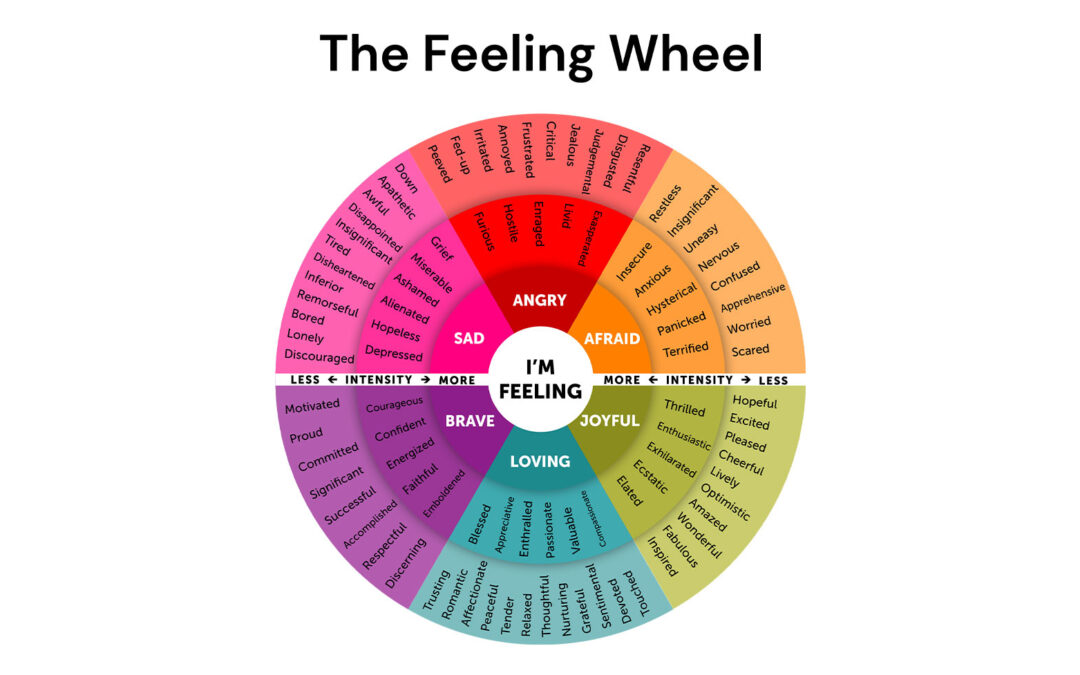
Emotions
This blog is based on a conversation with Lynn Sumida and Jeff Brown, founders of Expanding You.
“We celebrate our ability to create machines that move as man, yet we
take for granted the miracle that is the human body.”
~ David Alejandro Fearnhead
I was speaking with a friend this morning who told me about a new car she got to drive last weekend. She excitedly shared some of the features that modern vehicles have, like blindspot checkers, newfangled warning systems and, well – comfortable seats.
I shared in her excitement and found myself thinking about how eagerly I track advancements in virtual technology, awaiting the day where it becomes possible (and affordable) to have virtual experiences that feel almost “like real life.”
Celebrating technological wonders like these is a beautiful thing. For me personally, it is a regular source of awe and inspiration in my life. As human ingenuity transforms the world every day through these advancements, I encourage you to transform along with it, through a simple practice: every time you find yourself impressed by a new device or discovery in the world, take that moment as an invitation to find wonder in yourself, as well.
The next time you hear about a wild new step for artificial intelligence, pause to marvel at how automatically that same or even greater intelligence operates in you. When the next Boston Dynamics video shows backflipping and dancing robots, do a little shimmy for yourself and recognize the millions of years of evolution that brought those abilities to you, too.
If you’re having trouble coming up with an amazing human ability, Expanding You recommends one to celebrate: your system of emotions. Long before Ford, Toyota, or Subaru, it was Humanity™ that developed a powerful blindspot checker called emotion. But this system is often neglected and underutilized, much like an unused turn signal, which can lead to uncomfortable results.
For many of us, emotions are something we rigorously try to control, or something which suddenly overrides us. Often it is a piece of ourselves that can be difficult to understand or talk about. There is a lot of conditioning that can cause this – perhaps you’ve been told to “suck it up” or been accused of being overly sensitive.
Or maybe you’ve seen displays of emotion that felt threatening or uncomfortable, and now you link those emotions with discomfort.
What often results from this is an unwillingness to engage with certain types of emotions; for me, anger was that emotion. For a long time, I would almost immediately repress anger as it arose. Growing up, I had not seen anger as an emotion that could be resolved calmly or compassionately, and thus decided (subconsciously) that it was not to be trifled with. But anger, as with all emotions, is a blindspot checker – one that arises when we think something should be different or that a boundary has been crossed.
When we suppress the angry voice within us, we build up a growing resentment for the people and systems that seem unjust. This unreleased energy may bring tension to your neck and shoulders, making it more difficult to relax and reducing your ability to actively participate in the world. This can lead you to either withdraw or explode when the resentment is triggered.
The Expanding You programs highlight an important aspect of emotions: they do not disappear when ignored. Much like the check engine light in your car, it is only by addressing the underlying issue that the warning light – our emotion – will turn off. So how do we address the underlying problem?
“When a problem is disturbing you, don’t ask, ‘What should I do about it?’
Ask, ‘What part of me is being disturbed by this?’”
~ Michael A. Singer
The next time you notice a shift in your emotions, pay attention to the sensations that go along with it. You can even practice right now – think of a recent frustration you had, and try to really embody the moment where you got frustrated. Now think of a recent disappointment in the same way. Now try a joyful moment, or a grateful one.
Pay attention to the subtle differences in how emotions are felt – this will help guide you to the deeper issue.
In fact, Jeff Brown and Monique Stefens of Expanding You have a tool for growing your awareness of feelings and your ability to label them:
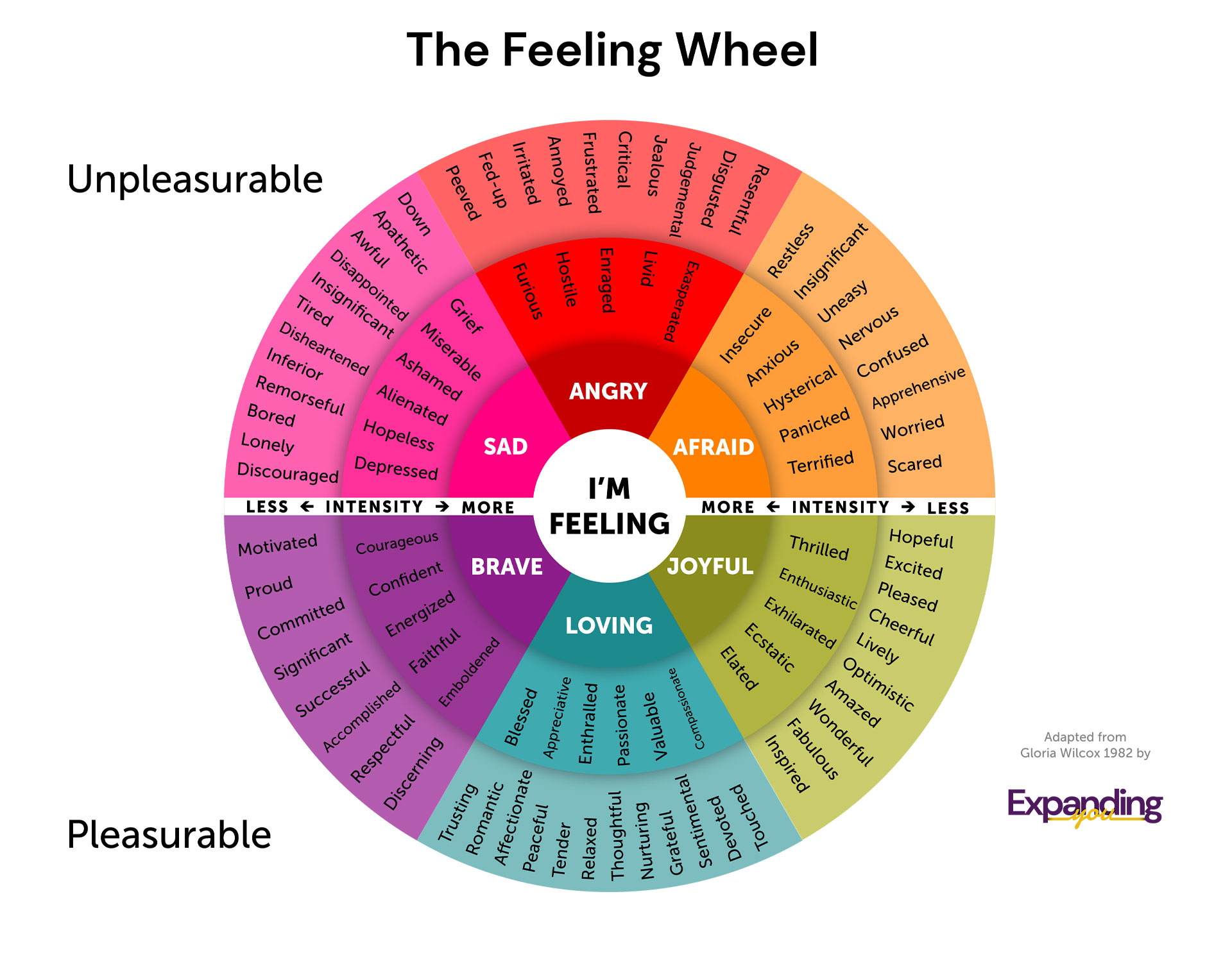
The feeling wheel is a tool that has been around for decades, originally created by Gloria Wilcox, and provides powerful vocabulary for understanding our emotions. As you tune in to the sensations in your body, scan the wheel to find the words that identify your inner experience.
Despite the research and attention that some circles have given to the world of feelings, it has been reported that a majority of people use fewer than five feeling words to describe their internal experiences. In our view, the words “happy, sad, fine, good,” and “bad” don’t quite describe the depth or richness of the human experience.
In addition, many people are not in tune with their bodies and the sensations that correlate with those feelings.
Let’s say I notice a tightness in my gut when I recognize a person out in public, and I identify my feeling on the wheel as apprehensive. What I’m experiencing is a low intensity version of fear, which is in the category of AFRAID. What am I apprehensive about? I’ve forgotten this person’s name! Why does that cause apprehension?
Because I believe that I should remember peoples’ names after meeting them or that it’s disrespectful to not remember their name.
Notice what emerges as I label and explore my feelings. There is a thought about the way things should be; I should remember names. Multiple thoughts might arise together; “it’s rude of me to forget.
They were so nice when I met them… what if they think poorly of me for forgetting?” All feelings will have thoughts linked to them, and this is excellent news: because we have much more control over our thoughts!
Adding positive thoughts to the mix, like thinking “They’re probably nice enough to forgive me” or “being upfront and apologizing shows maturity and interest,” will bring pleasurable feelings.
Identifying the feeling, and then the thoughts attached to it, allows us to make a shift. By knowing what thoughts are hiding in our blindspots we can be more intentional about creating the experiences we want, using new thoughts that drive us towards empowered action.
I might go up and share from a new perspective: “hey, I really enjoyed talking to you the other day but I was so caught up in what you said that I forgot your name.”
Suddenly I find myself on the opposite side of the wheel, feeling respectful and accomplished for striking up a conversation and honoring my desire to remember their name.
The Expanding You programs encourage you to honor all of your emotions for the opportunities they present; they might highlight a call to action, or room for growth.
Recognizing and naming feelings allows us to better understand ourselves and gives us ways to communicate with those around us, creating closeness and deeper connection. Providing space for both pleasurable and unpleasurable feelings allows our hearts to be fully seen by those around us.
“Your heart is the light of this world. Don’t cover it with your mind.”
~ Mooji
If you’re not yet convinced of how marvelous this feeling system is, give it a try! Over the next week, check in with the wheel whenever you feel emotion in your body. If it’s easier, start with the pleasurable emotions – learn what thoughts guide you to joy, love, and bravery. Then see which thoughts turn up as sadness, anger, or fear.
For now, don’t worry about changing or using your emotions in any way – just get to know them and what they are trying to tell you. Oftentimes the insights you’ll find there will be enough to guide your next steps. But if you find you’re still stuck… let us know! The Feeling Wheel is only one of many tools we use to build emotional intelligence and channel the body’s natural strengths into growth and transformation, and we’re eager to share more of them with you. In fact, for a sneak peek into how feelings fit into the bigger picture of inner balance and resilience, we invite you to take a look at this brief lesson from our work and to reach out if it gives you any insights or questions.
Key words –
#Identity, #evolving, #transformation. #Personal growth, #being triggered, #emotional intelligence, #feelings, #feeling wheel, #emotions, #total behavior, #mental health, #core wounds, #emotional wounds, #triggered, #healing, #self awareness, #awareness, #trauma, #coping, #loss, #grief, #anxiety, #in control, #out of control, #stuck, #growth, #learning, #self improvement, #parenting, #leading, #leadership, #managing, #leader, #depression, #well being, #psychology, #emotion wheel, #emotional wheel,
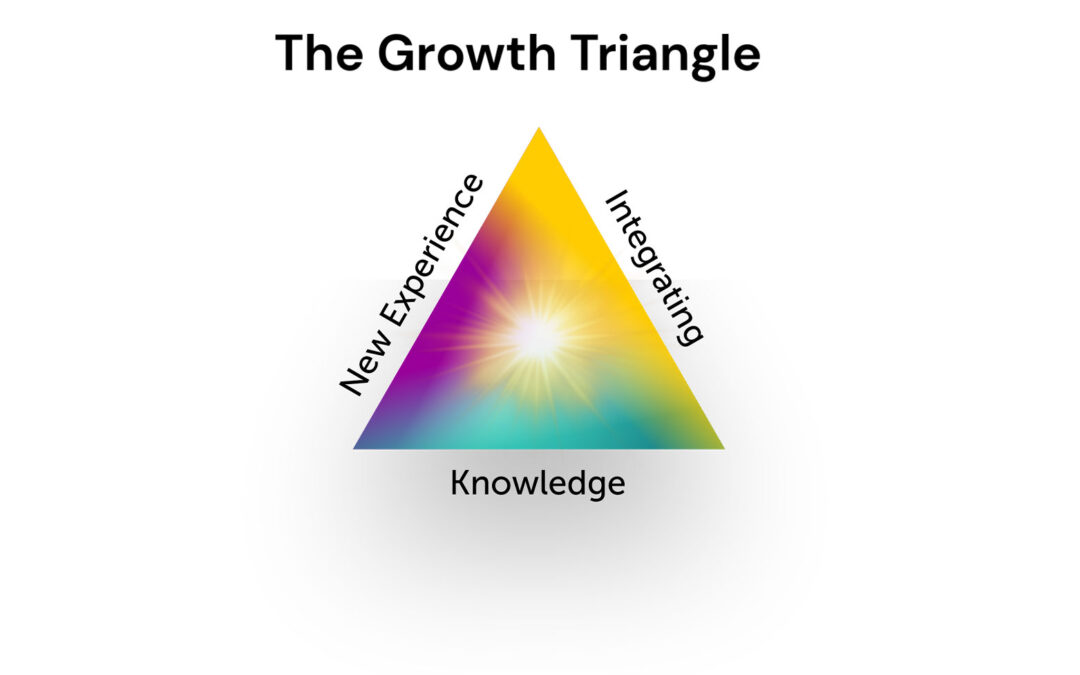
Growth
This blog is based on a conversation with Lynn Sumida and Jeff Brown, founders of Expanding You.
Before diving into the ingredients we recommend for an upward, transformational path, I want you to recall the best meal you’ve ever had. Picture it there in front of you and remember what it felt like to take a bite – or perhaps scoop – of that delicious meal. Think about the flavors and textures it has, and the satisfied feeling of leaning back as the last morsel turns to bits in your mouth.
Hopefully your mouth is watering now, but don’t run off for a snack just yet – hang on to that memory and I promise to make the most of it in just a few paragraphs.
Firstly, since you are here and reading this, it is likely that you desire some kind of transformation in your life. Some event or events have occurred and inspired a desire for growth within you. I would like you to consider what it was that started you on this path. Was it a high point? A feeling of “wow, I need to figure out how to get more of that!” Or was it a low point – a sudden realization that something has to change?
Chances are, it’s a mix of both, but regardless which type of experience has brought you here, Expanding You is glad to have you with us and their team wants to give you tools to help steer you towards that “wow” feeling. The first tool, in fact, is one you are already familiar with – you just may not have realized it yet.
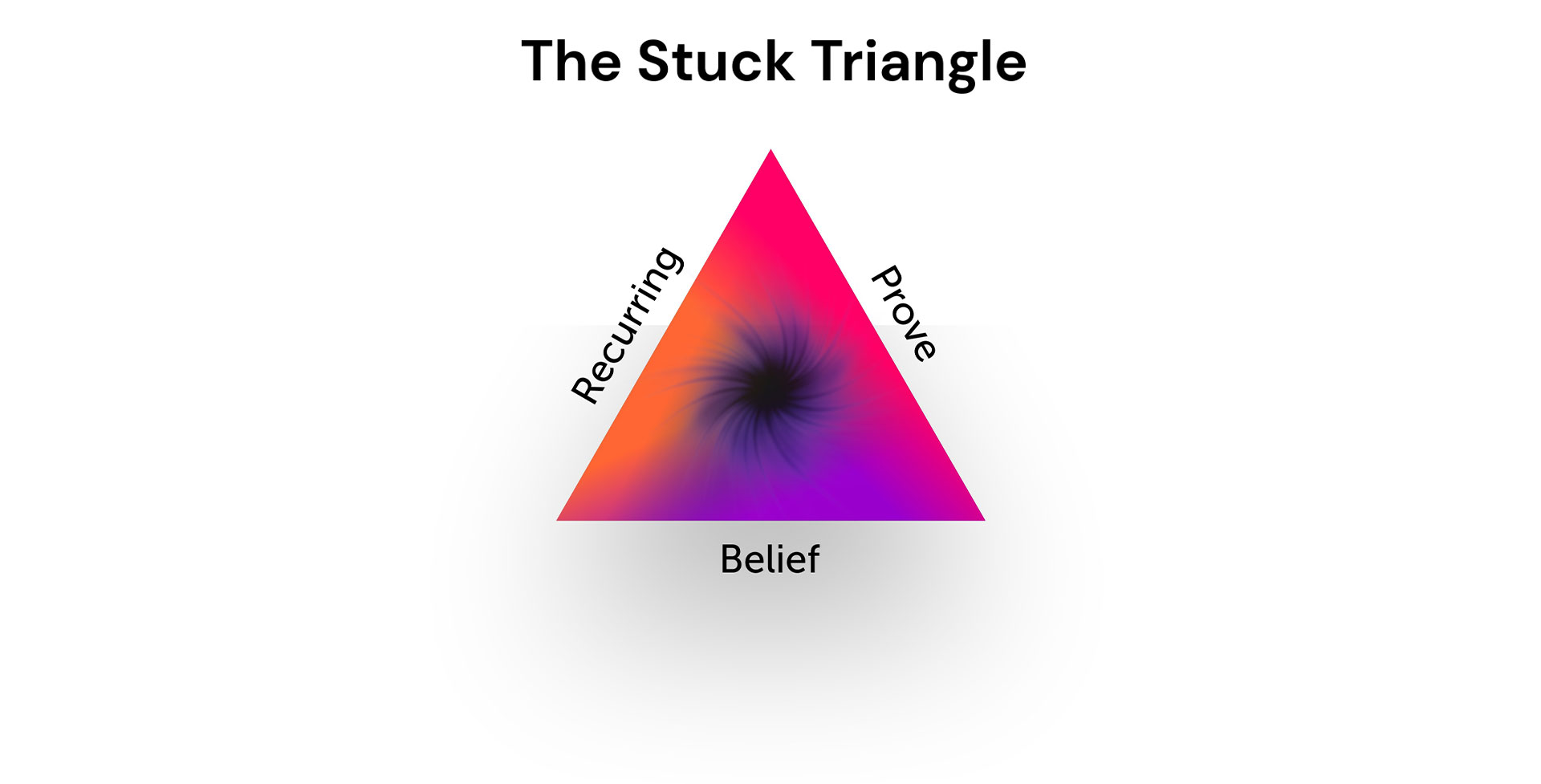
This tool is called the Stuck Triangle, and we have all experienced its effects. Those of you who had a recent low point might be feeling it acutely. Have you ever felt that, no matter what you do, you always get the same results? Do you feel your life is full of the same patterns or habits? Does it seem like there must be more, but you just don’t know where or how to find it? This is the stuff the Stuck Triangle is made of.
It may even be that the patterns we find ourselves stuck in are quite comfortable; being “stuck” in this sense is not a painful or unpleasant experience so much as an incomplete one. We get the sense that we have stagnated while there is more left for us to uncover, know, and feel. So why did we stop growing?
Well, the first ingredient of the stuck triangle is a belief – one that was likely formed very early in your life. Perhaps the belief was formed after a math test, when your teacher handed you back a paper that said “study harder” in glaring red ink. Or maybe the belief was formed in your childhood bedroom, while you sheepishly scooted toys under the bed because mom told you she can’t stand it when company comes over and sees your mess.
Whatever it was or whenever it happened, you likely formed an underlying belief about yourself or the world that unwittingly locked in. At that moment, the idea that “I’m not smart” or “I have to maintain appearances to be loved” entered into your programming.
It’s actually a sensible thing to do – our minds and nervous system try to protect us by recognizing danger (whether physical or emotional, real or imagined) and adapting our behaviour to avoid that danger. But many of us have since discovered that such adaptations often hurt as much as they help, and they obscure the person that we really want to be.
Those learned behaviours, in fact, are the next ingredient of being stuck; after a belief has been formed, we might spend years picking easy classes, avoiding homework, or anxiously tidying up, desperately avoiding the perceived danger in challenging our beliefs.
This creates recurring experiences which turn the belief into a habit – by avoiding learning, we perpetuate the idea that we are not smart. By seeking out and treasuring each comment of, “you keep such a lovely home!” we reinforce the belief that we must “do” to earn love. This creates proof in our minds that the belief is real and the cycle of being stuck continues.
Now, if this only happened with beliefs that were aligned with our innermost selves, we’d be all set! But as I’m sure you’ve experienced, some beliefs result in stress, frustration, and various other feelings of incongruence between what we think we should be or do and what we truly want and value.
At Expanding You transformation is viewed as the process of becoming more congruent and whole, and our next tool shows us the way towards it:
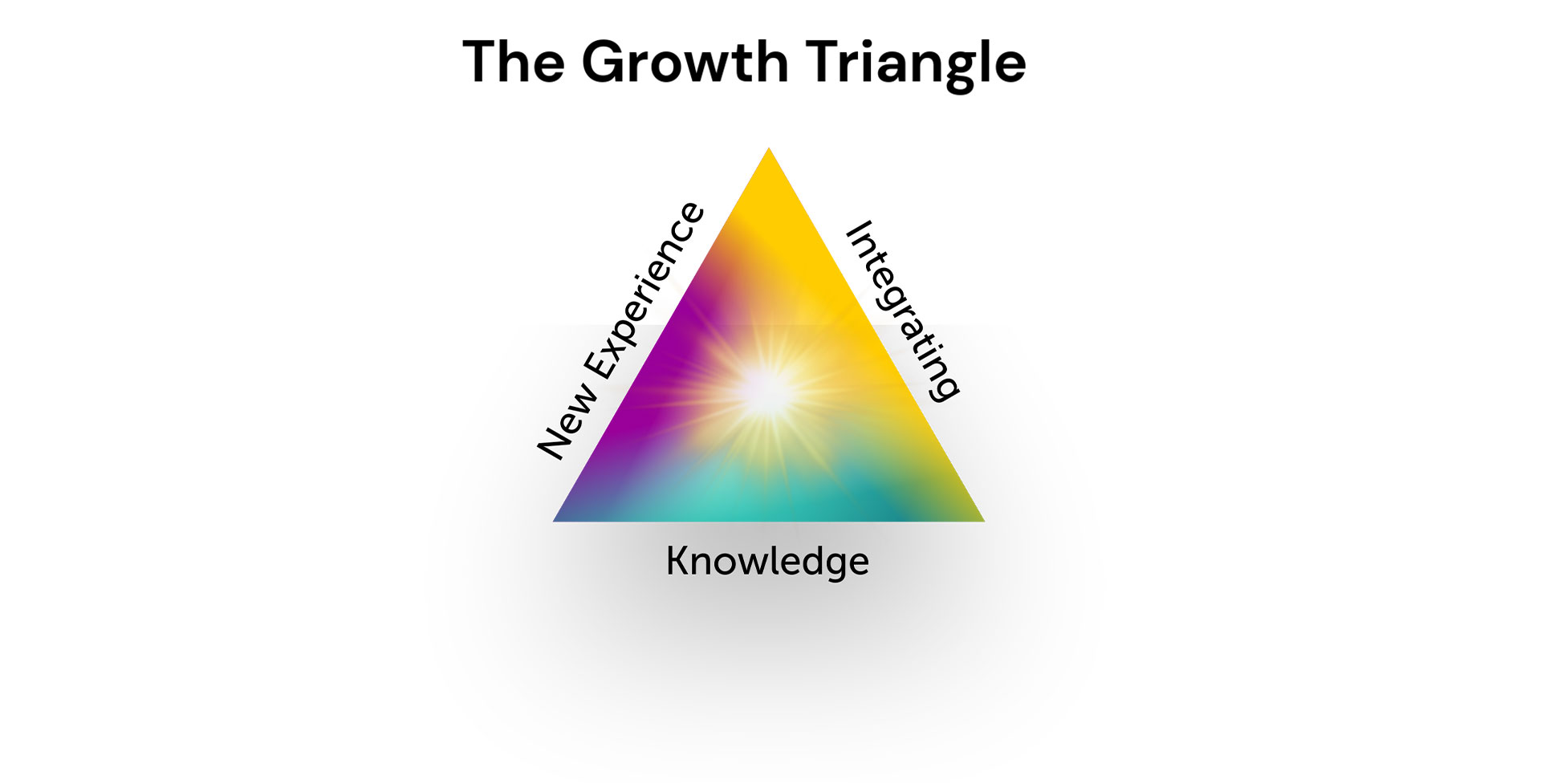
Growth is built upon the conscious integration of new experiences and knowledge. Moving upwards towards transformation means acquiring new ideas, perspectives, or tools we can use to interact with the world. It means seeking out genuinely new experiences to replace the recurring ones we were stuck in before, and leaning into tools and experiences until they become intuitive to your daily life.
A word of warning – in Expanding You’s experience, focusing on acquiring new knowledge and creating new experiences doesn’t immediately make us unstuck. You can still get stuck by creating a new pattern of seeking, but not applying, new knowledge. Some of us start finding tools for mindfulness, communication, or emotional intelligence and end up creating a great big box of pristine, hardly-used tools.
Think back for a moment to that delicious meal we talked about at the start – that wonderful flavor is our litmus test for a “new experience.” Getting stuck in knowledge is like reading the recipe for that delightful dish over and over, buying the special spoon, mixer, or slicer that we might not even know how to use, and then imagining what the meal is going to taste like without ever preparing the dish.
As an example of this, I currently have in my kitchen a ravioli maker that I have not once used. And, in the kitchen of my mind, I hold at least three recipes for different ravioli dishes. Next to those, my mind has a few ideas for assertive conversation with my roommates about dirty dishes.
Those also remain untouched. This causes our kitchens and relationships to become cluttered with unused utensils and unspoken thoughts. We may fantasize about, but never practice or experience, the meal or relationship we desire.
Lynn Sumida highlights that sometimes new knowledge is simply too advanced for us when we find it. We might think we understand a tool intellectually, but find that practicing it doesn’t give us the new experience we were expecting.
Let’s say I came across a beautiful quote:
“Truth is always what IS happening, not your story about
what SHOULD be happening.”
~ Byron Katie
Perhaps I decided to apply this wisdom to my situation around the dirty dishes; I tell myself “the truth isn’t that my roommates SHOULD wash their dishes, it’s that they don’t want to wash the dishes.” I then try to ignore the dishes in the sink, congratulating myself on my newfound enlightenment as the resentment I have with my housemates continues to simmer underneath.
Using knowledge in this incomplete way – where a problem isn’t solved so much as glazed over – is often due to misunderstanding how that knowledge is supposed to be used. This is why it is so important to sit with new knowledge, looking within ourselves until we feel a genuine shift in our understanding of the knowledge before applying it.
While we are absorbing new knowledge and creating new relationships with ourselves and the world around us, it is important that we remain patient with the process of integration. It takes time to practice putting knowledge into action, to create new behaviour, reflect on our experience, and to process those results into wisdom.
A good marker that you’ve reached an integrated state is when you can share your journey with others. Describe how your experience has changed you and what brought you to your new insight; if the change feels clear, you’ve probably given growth the time it needs to be digested.
But the time to integrate doesn’t have to feel like waiting – imagine it as building and anticipating. Remember that mouth-watering experience of your favorite meal? That’s the type of thinking that makes integration feel easy to work towards.
Every time you run into a hard conversation, a stressful moment, or maybe just get a little bored, picture the delicious spread awaiting you. Suddenly you’re not just buying milk, peeling potatoes, or boiling water – you’re making the world’s best baked potato soup!
Now that I’ve worked up your appetite, I’ll let you get to cooking. But as you do, try to practice the knowledge you’ve gained here. Think about where you may be stuck in old beliefs. Pick one, or maybe two, and use the guidance from Expanding You’s Stuck Triangle to get clarity on what isn’t working.
Then the Growth Triangle will help you move forward. What new thought, idea, belief would help you? Remind yourself of your goal: the wonderful flavors that await you when the cooking is done.
And don’t forget to give yourself time before, during, and after to process, and to keep your senses peeled for a truly new experience within yourself – you’ll know you’re on the right track if life starts to smell more and more delicious.
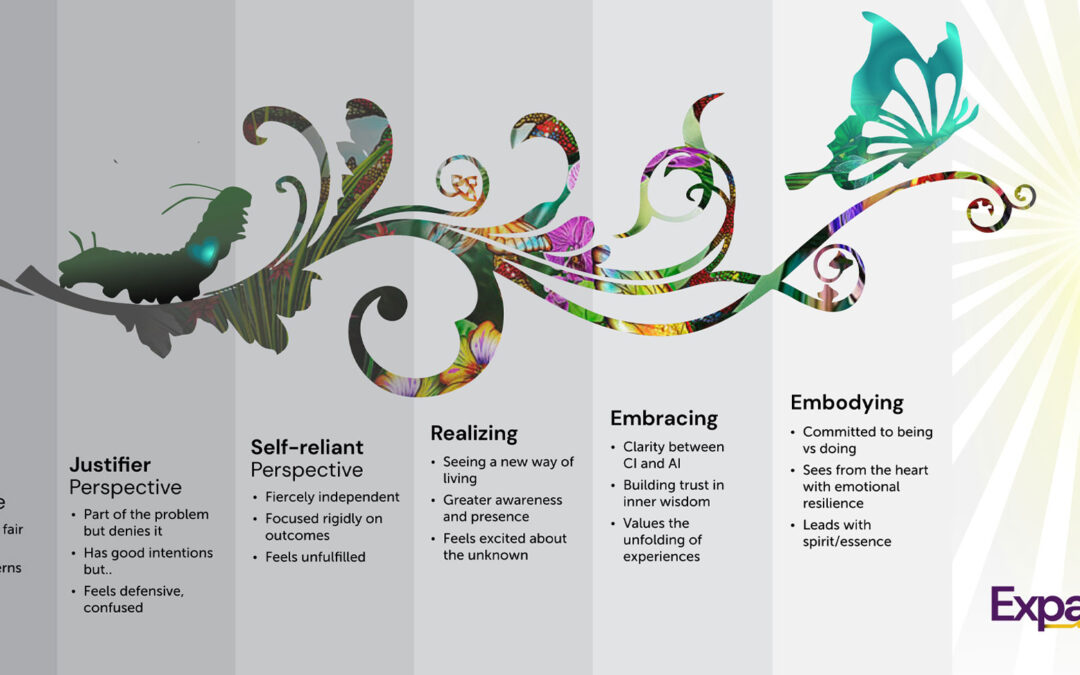
Identity
The Identity Continuum:
A Roadmap of the Developing “Self”
This blog is based on a conversation with Lynn Sumida and Jeff Brown, founders of Expanding You.
In 1920, Sigmund Freud described the Ego as a mental construct that bridges the gap between our more primal and acculturated selves. Thousands of years before, Lao Tzu wrote that “knowing others is intelligence; knowing yourself is true wisdom” and “mastering yourself is true power.”
This wisdom informs modern-day thinking, as well, in concepts such as self-determination theory and Carol Dweck’s growth mindset, both of which suggest that having an innate sense of ability, control, and connection allows for greater motivation and action. So whether it is given the name of ego, self-concept, self-perception, or personality, people throughout history have seen that our definition or perception of “self” serves as a foundation for our interactions with the world.
How, then, does this foundation influence us? What kinds of thoughts, and actions, might emerge from our relationship with this foundation? Lynn Sumida developed the Identity Continuum: a roadmap of the phases of identity development. Together with Jeff Brown they created a company, Expanding You, offering programs to guide people’s evolution through the stages of each phase of development
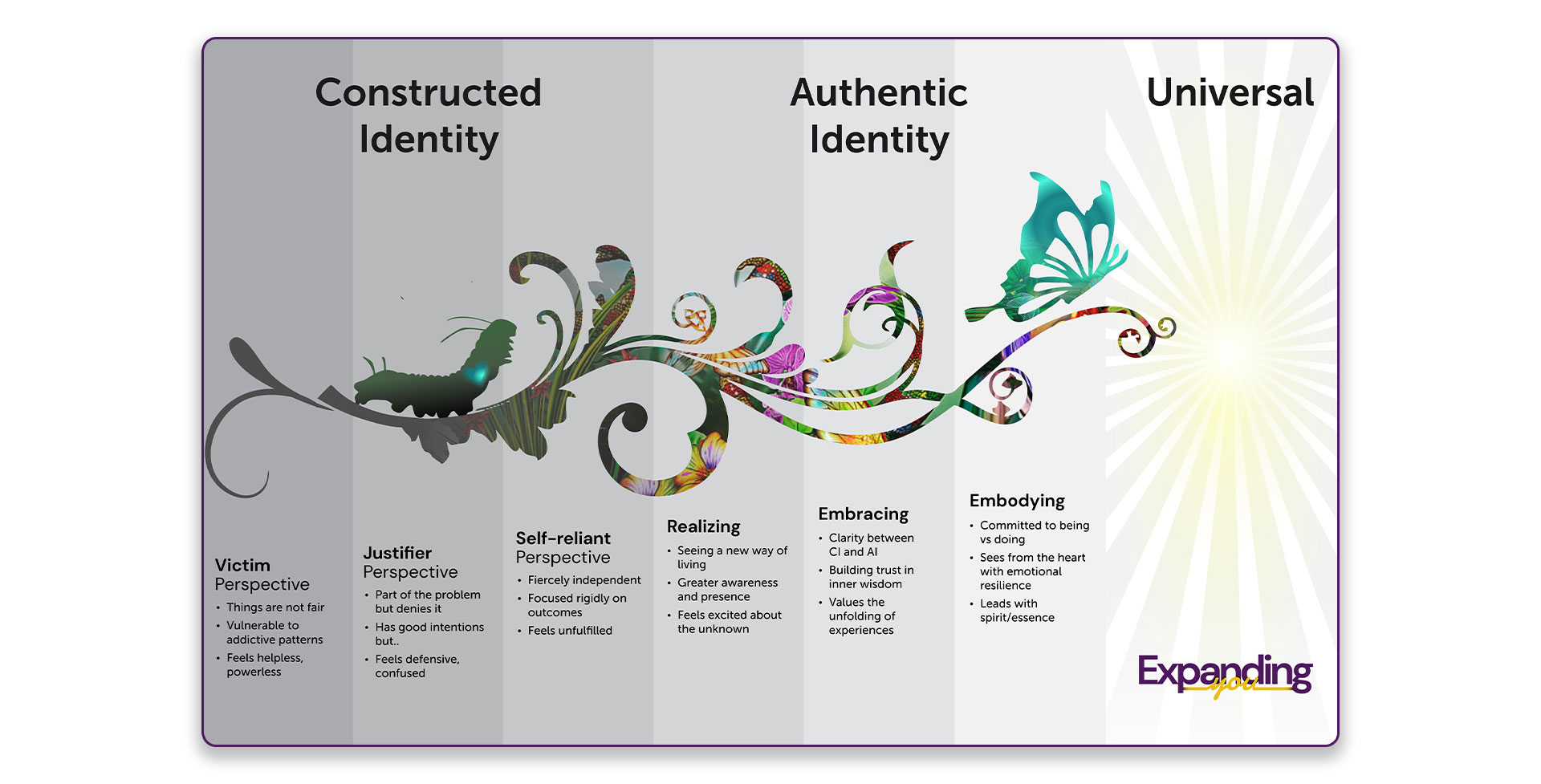
The Identity Continuum paints a picture of how we develop our concept of self, and shows how shifts in awareness, accountability, self-compassion, and healing can allow us to experience the world in a more authentic way. But, as with the lovely butterfly, we must always begin as a crawling caterpillar…
The First Shift: Awareness and Accountability
“Reactivity is enslavement. Responsibility is freedom.”
~ Sadhguru
Even for us bipedal creatures, the feeling of crawling is one with which we are all familiar. Of course, we did crawl, at one point, but most of us have also had the feeling of not moving quickly enough – or in the right direction – even as adults. We feel “stuck” and tell ourselves “life is hard” and ask, “why does this keep happening to me” or “what am I supposed to do?”
These thoughts foreshadow the first significant shift of identity: from thinking life is unfair to taking personal responsibility for that life. It is a shift from an external focus to an internal one.
This is the territory of a plethora of self-help books, gurus, and classes which teach that, in order to gain control over one’s life, one must be accountable and take responsibility. A Victim perspective might ask, “why did this happen to me,” then get caught in thinking life is unfair.
Slowly, we learn to seize influence over our circumstances, taking ownership of our thoughts, feelings, and actions. When the Justifier no longer rationalizes incongruence between their behaviours and values, they move toward self reliance and ask “how am I responsible for this?”
The underlying belief here is an empowered one; we discover we have great influence over our lives and thus place our focus on where we can leverage that influence for the results we actually want.
The perspective in the Expanding You programs is that the caterpillar stage of our lives is the journey of the Constructed Identity. Becoming Self-reliant is a wonderful step in the journey towards fulfillment, and it can transform your world. But even after discovering the power of self-reliance, and seeing the results we wanted, many of us end up feeling stuck once again. Why?
Constructed Identity: Life of a Caterpillar
“I am a part of all that I have met.”
~ Alfred Tennyson
Getting stuck in the Self-reliant perspective is buried under the tangled idea of “results we want.” Oftentimes this is just what we think we want, taught to us since childhood by a myriad of people and experiences.
We might learn to value family, sacrifice, and self-control. We may be taught to compete, to be ambitious, and express ourselves fully. We might be told that money, memories, connection, or status are the markers of success.
While pursuing any number of those values might lead us to success, they are built from our upbringing, the conditions, experiences and people that surrounded us. The early conditioning will inevitably limit us living our full potential.
This is perhaps captured succinctly in the concept of moving from “good to great.” Many successful people reach the level of “good” but struggle to reach greatness because, in order to achieve greatness, you must relinquish the familiar patterns that brought you to “good.”
Many people get stuck in the Self-reliant stage because society highly values this stage! In fact, many of us grow up believing this stage is the goal, as living in self reliance can bring with it lots of financial and social rewards.

When immersed in Constructed Identity, our actions are guided either towards living in safety, comfort, and certainty or the opposite: living in excitement, thrills, and freedom. We fill our lives with what we think will meet our needs and allow us to survive.
These are powerful forces coded into our psychology and even our biology; it is no wonder we spend so much time and energy feeding into them, and why, at first, they seem to be the results we want.
But then, for most people, there comes a time when dissatisfaction starts to creep in; perhaps even after achieving much of what we thought we wanted. Expanding You supports people in becoming aware of an inner self that wants something more, a greater degree of alignment or fulfillment.
The caterpillar is much the same, in fact: put bluntly, it is an eating machine. Its job is to consume and consume, growing and molting several times until it has all the nutrients it needs to become a pupa.
What is important to recognize about this stage of life, then, is that all the time we spend as a caterpillar is valuable and necessary. When we move from Constructed to Authentic Identity, we transcend and integrate – not cast away – the Constructed Self.
Those nutrients we gained through working towards a promotion, being polite to in-laws, and trying to get skinny are all required for the caterpillar to be ready for transformation and comprise the wings of our future.
The Second Shift: Self-compassion and Healing
“To become what one is, one must not have the faintest idea what one is.”
~ Friedrich Nietzsche
The commitment to pursue transformation is a real challenge. While pursuing this transformation, we might find that the version of ourselves we have constructed for our jobs or in our relationships is not our core self.
Consider the conditions of entering into a chrysalis: after long years of roaming, hiding, and eating, we have to curl up, hang in place, and pray that the other bugs and birds don’t gobble us up while we transform into something seemingly unrecognizable.
Where becoming Self-reliant meant owning our results, taking responsibility, and being in control, the journey into authenticity is one of relinquishment. The focus shifts from “doing” to “being.” But what are we relinquishing, and what is this state of “being?”
Consider again the type of thoughts that characterize Constructed Identity. The Victim perspective might struggle with confidence and say, “I’m shy, people just don’t listen to me.”
The Self-reliant person believes instead “I can make myself heard and choose to be confident.” Both of these are stuck in “doing.” At first, we focus externally on the actions of others – such as on whether or not they are listening. An internal shift gives us power to speak our truth, but each mindset is still limited to behavior.
The idea of “being confident” is still trapped behind the conditions of acting in a certain way and gaining approval from others. This thinking is not fully representative of our inner selves and we limit joy and self-compassion in favor of actions and outcomes. The authentic person’s mindset, instead, is in a state of “being” and has no prescribed behavior.
These are the discoveries that invite us into the Realizing stage of the Authentic Self. In the Realizing stage of Authentic Identity the person is exploring what it feels like to live from this foundation.
The person asks, “Am I feeling safe within myself? Am I feeling open-hearted and accepting?” They will question “ Is impressing others the most important thing to me? Is that what I truly want?” This perspective is one that explores the underlying beliefs of the Constructed Self and seeks out the aspects of our identity that we often tend to hide, repress or deny.
Relinquishing our constructed beliefs is what allows us to simply “be;” it allows us to soak in the world around us without expectation or criticism. To better understand this state, recall a moment where you felt profoundly at peace.
For many of us, it happens in nature – sitting by the ocean, perhaps, listening to the waves and watching the sun drift inexorably across the sky as our evening ends and another’s morning begins. Attention fades into undirected presence, absorbed in the sensations of the now. There is no question of safety, or sufficiency.
The ease and joy experienced in these moments is spontaneous and unconditioned; it is as natural as the movement of the sun. The Realizing stage begins when we recognize that this state is always a possibility, and the Embracing stage begins when we invite this state into our lives continuously.
At Expanding You they know the pathway to ease is not always easy. It is not just the setting sun and sparkly ocean that unfolds in front of us – it’s setting the table and stinky laundry, as well. Allowing presence to wash over us even in these moments is the practice of Embracing.
This can be guided by the core belief that every moment, every thing, and every experience has value. When feeling those old sensations of threat, the Embracing person pauses. They allow the fear to pass through them and fill the path behind it with appreciation, treasuring the richness of the experience and inviting themselves to feel viscerally the value of the moment they are in.

It is important to remember that we do not integrate the constructed and the authentic through judgment or anger, nor are we motivated to change through fear or avoidance.
We call this stage Embracing because it is guided by love; we heal the scars where the Constructed Self split off from the authentic one by having compassion for both, and we act through a desire to create experiences in service to our whole, healed self.
The Third Shift: Presence
“When I let go of what I am, I become what I might be.”
~ Lao-Tzu
Embodying is the final stage of the Authentic Identity, where integration of the Constructed Self and the presence that comes with it becomes normalized, comfortable, and even honored. In much the same way that accountability becomes the default for the Self-reliant person, radical acceptance becomes the default for the Embodying one. In this space, the Self is balanced and accepted in its entirety.
From here, the practice that remains is one of presence, openness and expansion. As a natural product of seeing and accepting ourselves, we learn to see and accept others as a reflection of the same journey. The initial differentiation between internal and external breaks down as our selfhood gradually becomes limitless in its definition.
Where before we recognized we are the culmination of all that we have experienced, we may now begin to identify with daily experience itself and the limitless opportunities for joy and happiness it contains.
Throughout this process, at all stages, we will move unevenly in different aspects of our lives. Like the branches we climb, we do not grow in straight lines. It is also important to remember that, to the caterpillar, the way of life of a butterfly is utterly foreign.
The butterfly moves about in a way that is radically different, and simply not possible, to the little bug still clinging to branches. But this is by design – the steps taken to eat, molt, pupate, and break free collectively allow flight to be possible. Unlike us, the caterpillar does not become angry at itself for not having wings today; it simply trusts that, when the time and place is right, the wings will come.
So trust the process, connect with people who can help you grow, keep gathering and putting knowledge into action for new experiences, and keep integrating those experiences as you return to wholeness. Your wings will come, too.
“One day, in retrospect, the years of struggle will strike you as the most beautiful.”
~ Sigmund Freud










